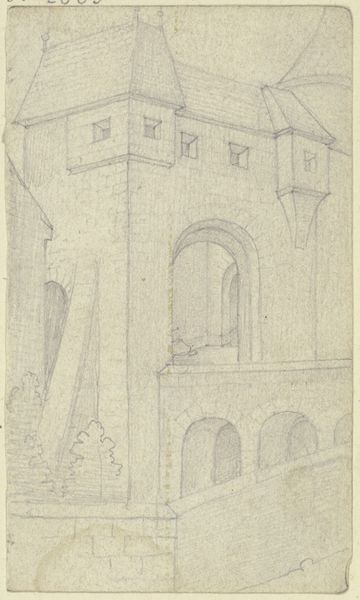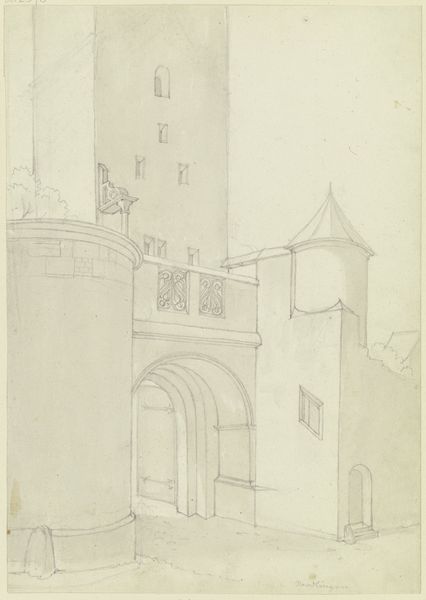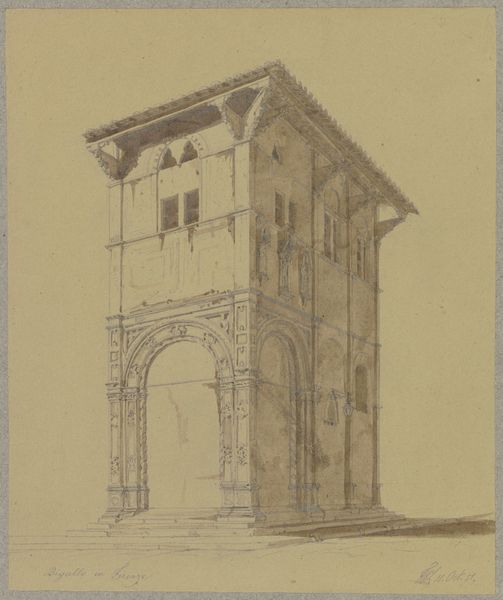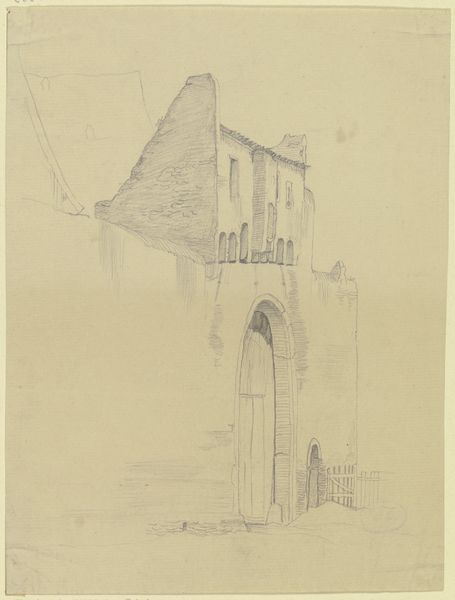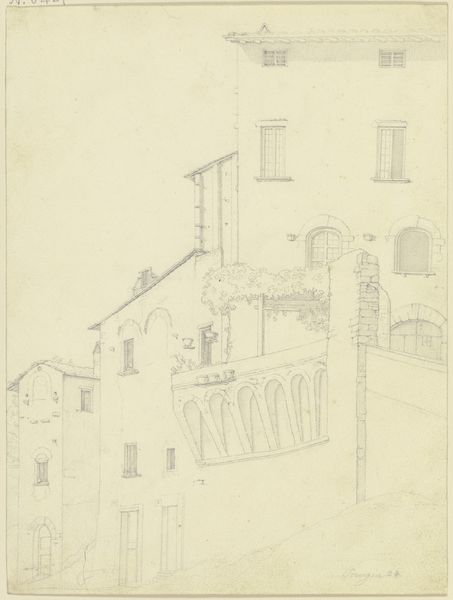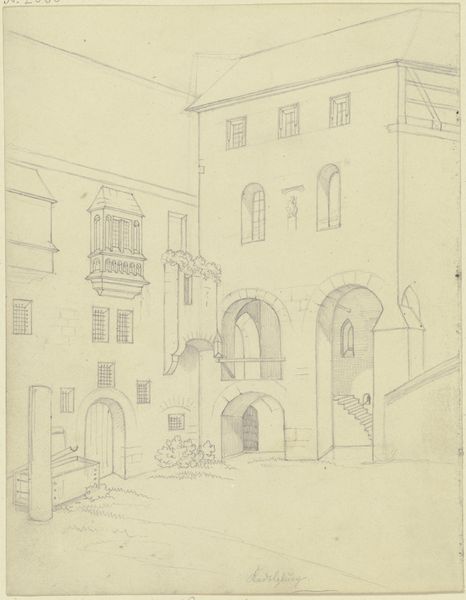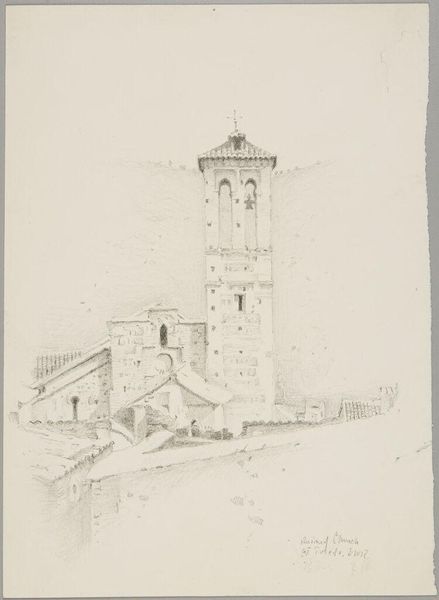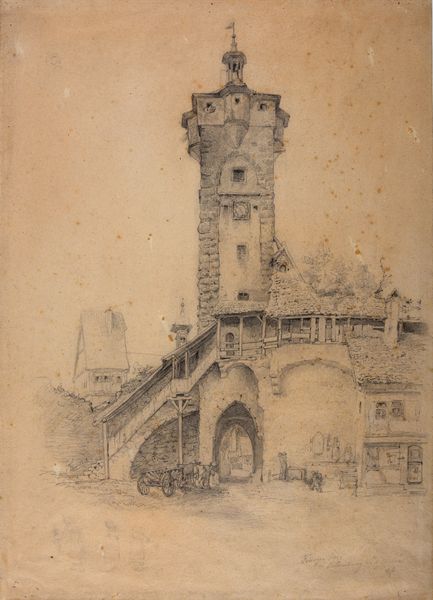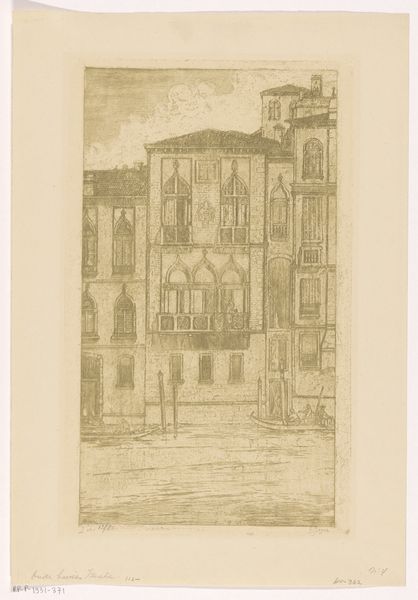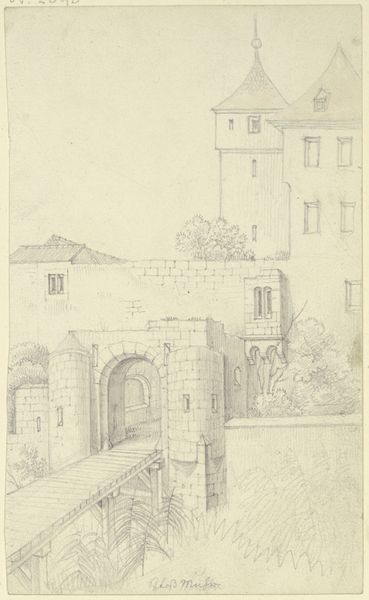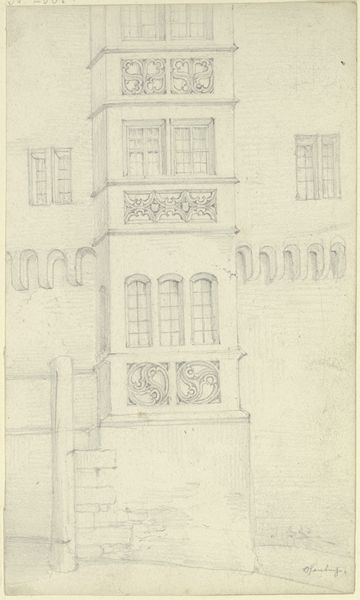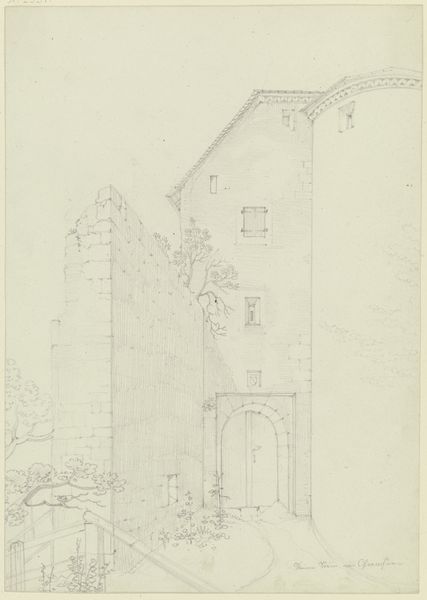
Copyright: Public Domain
Editor: This is "House in Viterbo," a pencil drawing created around 1851 by Friedrich Wilhelm Ludwig. The intricacy and detail in the stone are just amazing. It makes me feel like I'm looking through time. What formal elements strike you the most in this work? Curator: The structure of the composition immediately draws my attention. Note the artist’s delicate rendering of form, volume and perspective. Consider how the orthogonals converge towards a vanishing point, a classical device imbuing the architectural subject with order. Editor: That makes sense. The precise lines really emphasize the architectural structure. It's so clean. Curator: Precisely. Examine the strategic deployment of light and shadow, delineating architectural planes, accentuating depth and thereby instilling a semiotic order, you see? It is about the manipulation of signs. Observe the textures rendered via intricate lines to suggest solidity and material. How does that formal play contribute to its artistic essence, its Neoclassical leanings, specifically? Editor: I hadn't thought about it that way before. So the emphasis on clean lines, geometric shapes and structural clarity pushes this pencil drawing towards Neoclassicism, even though it depicts an everyday scene? Curator: Precisely. By abstracting and idealizing reality, rendering buildings not just as structures, but also studies of form, line, light and volume, the artist elevates architectural drawings to art. Do you see? The intrinsic aesthetic elements triumph. Editor: Yes, I do! Thank you. Curator: Of course. Focusing on form illuminates content.
Comments
No comments
Be the first to comment and join the conversation on the ultimate creative platform.

